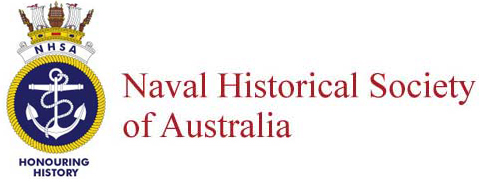- Author
- Issacs, Keith, AFC, ARAeS, Group Captain, RAAF (Retd)
- Subjects
- History - WW1, Naval Aviation
- Tags
-
- RAN Ships
- HMAS Melbourne I, HMAS Sydney I, HMAS Australia I
- Publication
- March 1974 edition of the Naval Historical Review (all rights reserved)
Meanwhile, the enemy aircraft had reached the battle cruisers, dropped five bombs, and were back over the light cruisers within five minutes. Unfortunately, in climbing up through the clouds, Gibson lost sight of his opponents and returned to Melbourne. Observing Gibson’s return, Courageous, which had not yet launched an aircraft, refrained from doing so. But Sharwood’s quick getaway from Sydney was paying dividends. He had his quarry in sight, and slowly but surely began to overtake him in a 60-mile chase. Sharwood eventually got within firing distance and gave the seaplane several bursts from his machine-gun. The German aircraft dropped away into a spinning nosedive through the mist, and Sharwood was about to follow it down when he sighted a second enemy aircraft behind him. He turned, climbed, and gave combat. Soon afterwards one of his guns ran out of ammunition and then the other jammed; Sharwood broke off the engagement and headed back in the direction of Sydney. He had just about given up hope of finding his parent ship when he sighted two British light cruisers and several destroyers. To add insult to injury one of the ships then fired at him. Sharwood flew down, identified himself, and ‘took the water’ ahead of the destroyer HMS Sharpshooter. Whether or not this ship was the offending ‘sharpshooter’ is not known. Sharwood ditched successfully – this was the only way that landplanes operating from ships other than carriers had of returning to their floating bases – and his Camel remained buoyant with its tail in the air. Sharwood clung to the tail for 20 minutes before he was picked up, and the Camel was later salvaged by the light cruiser HMS Canterbury.
It was an eventful occasion in which, as one of his colleagues lightheartedly observed, Sharwood had been able to combine his Saturday evening bath with a successful operation. But a more serious appraisal of the incident has been recorded:
‘The achievement of the Sydney’s aeroplane went practically unrecognised’ (wrote the Australian Official Historian), ‘the officer in command of the light cruiser squadrons having apparently taken it for granted that Sharwood had shared Gibson’s bad luck. Further, Sharwood did not even get credit for having shot down an enemy machine, since he could not state that he had seen it fall into the water. But the operation – whether the German aeroplane was destroyed or not – was entirely successful. The German scouts were after bigger news than the presence of light cruisers or even battle cruisers; they wanted to know whether the Grand Fleet was out – and in a few minutes more they would have known. Before, however, they had seen more than the Lion and her comrades . . .the ‘planes from the Australian ships were rising to intercept them, and they were forced to return in a hurry. On the other hand, had they neglected these two ‘planes and gone on to find out what they were looking for, Sharwood and Gibson would have caught and probably destroyed them, or at any rate detained them so long that the Courageous could have sent hers to complete the work.’
One interesting official photograph shows the air element personnel required to fly and maintain a Camel aboard a light cruiser. Taken on Sydney at Rosyth on 2 July 1918 the caption lists Royal Air Force pilot Lieutenant Brewin and naval air-mechanics C. Graffy, R.H. Radcliffe and E. Birch. Individual Camels which were carried at separate times by the Australian warships included N.6822 and N.6638 on Sydney, N.6970 and N.6828 on Australia, and N.6794, N.7104 and N.6603 on Melbourne. The three ships each carried a Camel on 21- 22 November 1918, when, with the Grand Fleet, they escorted the German High Seas Fleet into captivity. Photographs taken in December show that the Australian ships were still equipped with aircraft but early in 1919 the Sopwith 2F.1 Ship’s Camels were returned to the Royal Air Force.
